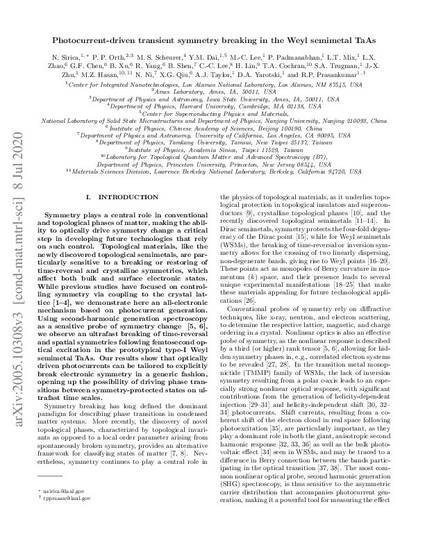
Symmetry plays a central role in conventional and topological phases of matter, making the ability to optically drive symmetry change a critical step in developing future technologies that rely on such control. Topological materials, like the newly discovered topological semimetals, are particularly sensitive to a breaking or restoring of time-reversal and crystalline symmetries, which affect both bulk and surface electronic states. While previous studies have focused on controlling symmetry via coupling to the crystal lattice, we demonstrate here an all-electronic mechanism based on photocurrent generation. Using second-harmonic generation spectroscopy as a sensitive probe of symmetry change, we observe an ultrafast breaking of time-reversal and spatial symmetries following femtosecond optical excitation in the prototypical type-I Weyl semimetal TaAs. Our results show that optically driven photocurrents can be tailored to explicitly break electronic symmetry in a generic fashion, opening up the possibility of driving phase transitions between symmetry-protected states on ultrafast time scales.
Available at: http://works.bepress.com/peter-orth/39/

This is a pre-print of the article Sirica, N., P. P. Orth, M. S. Scheurer, Y. M. Dai, M-C. Lee, P. Padmanabhan, L. T. Mix et al. "Photocurrent-driven transient symmetry breaking in the Weyl semimetal TaAs." arXiv preprint arXiv:2005.10308 (2020). Posted with permission.